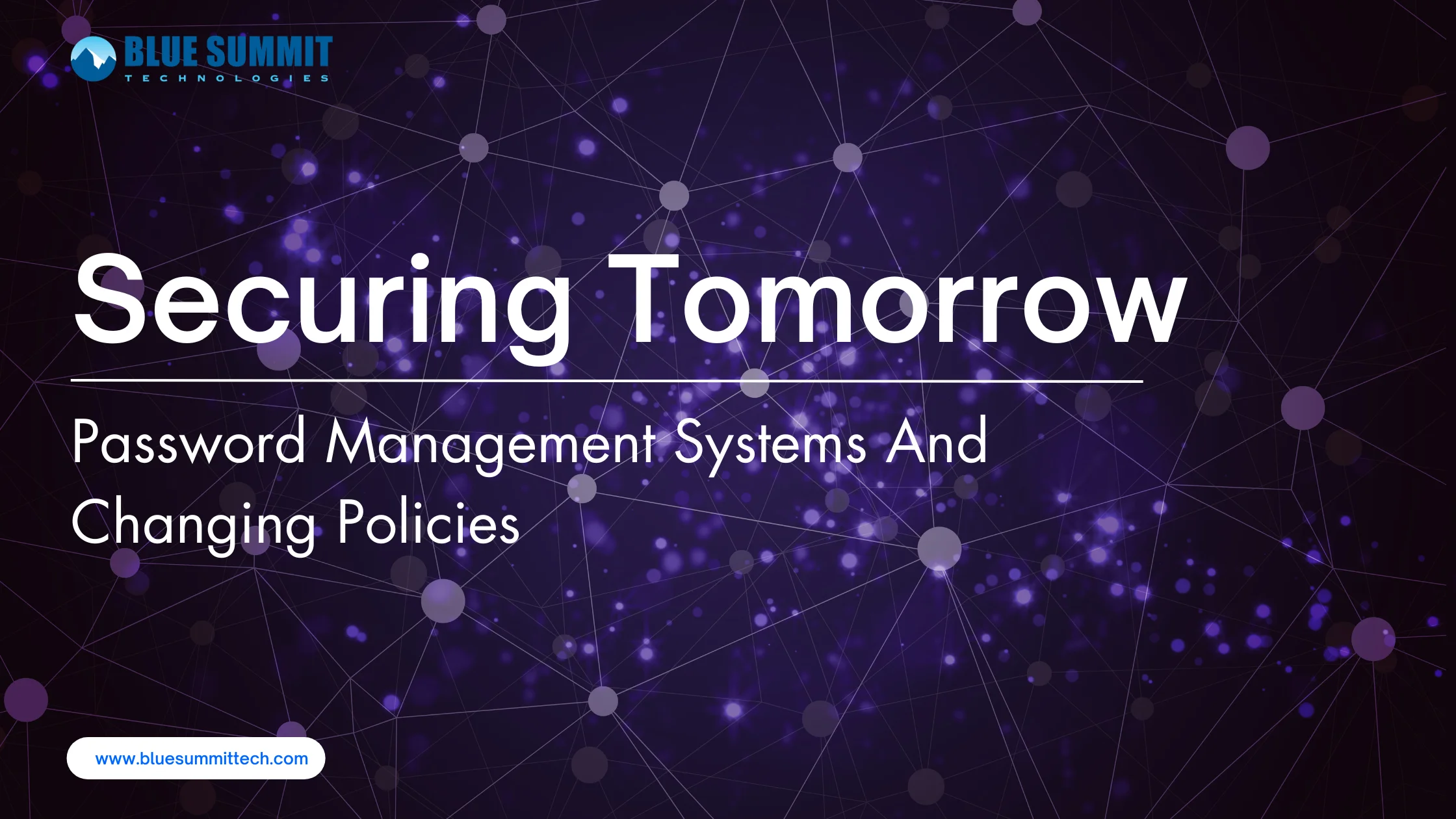
Posted on Tuesday, Mar 05th, 2024
Strengthening Cybersecurity: Evolving Password Policies in Password Management Systems
In the realm of cybersecurity, the password management system has long been a cornerstone of defense, serving as the initial barrier against unauthorized access to digital assets and sensitive information. However, as technology advances and cyber threats become increasingly sophisticated, relying solely on traditional password management practices has become inadequate. Recognizing this, organizations are now reevaluating and updating their password management systems to adapt to the evolving threat landscape. This entails moving away from the era of simplistic and easily guessable passwords, such as "password123" or "123456" towards more stringent requirements.
Today, companies are implementing stricter password management systems to bolster security and minimize the risk of data breaches. These systems often include requirements for longer passwords, the use of a combination of upper and lower-case letters, numbers, and special characters, as well as regular password updates. Additionally, organizations are increasingly leveraging multifactor authentication methods, combining passwords with biometric verification or token-based authentication, to add layers of security. This shift underscores a growing acknowledgment of the critical role strong authentication measures play in fortifying defenses against cyber threats. By embracing these updated password management systems, organizations can better protect their digital assets and confidential information from malicious actors, enhancing overall cybersecurity posture in an ever-changing technological landscape.
Key Aspects of Implementing Password Policy Guidelines
To enhance cybersecurity, it is crucial for organizations to implement and enforce robust password policy guidelines, ensuring the use of strong and unique passwords to protect sensitive information from unauthorized access. So, what exactly does this change in password management systems entail, and how is it being implemented in practice? Let's delve into some key aspects:1.Complexity Requirements in Password Management Systems
• Modern password management systems often mandate the use of complex passwords that include a combination of uppercase and lowercase letters, numbers, and special characters. By requiring users to create more complex passwords, organizations can significantly enhance the security of their systems and make them less vulnerable to brute-force attacks.2.Password Length Standards
• In addition to complexity requirements, many organizations are now enforcing minimum password length standards in their password management systems. Longer passwords provide a greater level of security by increasing the number of possible combinations, thereby making them more resistant to cracking attempts. As a result, users may be required to create passwords of a certain minimum length, such as 12 characters or more.3.Password Expiration Policies
• Traditionally, password expiration policies were common practice in password management systems, requiring users to change their passwords at regular intervals, typically every 30, 60, or 90 days. However, recent research has challenged the effectiveness of this approach, suggesting that frequent password changes may actually weaken security by encouraging users to choose weaker passwords or reuse old ones. As a result, some organizations are moving away from strict password expiration policies in favor of more flexible approaches based on risk assessment and user behavior.4.Multi-Factor Authentication (MFA)
• In addition to strengthening password policies, many organizations are implementing multi-factor authentication (MFA) in their password management systems to add an extra layer of security. MFA requires users to provide two or more forms of verification before granting access, such as a password combined with a one-time code sent to their mobile device or a biometric identifier like fingerprint or facial recognition. By combining something the user knows (password) with something they have (mobile device) or something they are (biometric data), MFA significantly reduces the risk of unauthorized access.5.Integration of Password Management Tools
• Another trend in password security is the integration of password management tools into password management systems, which help users generate, store, and manage complex passwords securely. These tools typically use encryption to protect passwords and provide features such as password generation, automatic form filling, and synchronization across devices. By encouraging the use of password management tools, organizations can empower users to create and maintain strong passwords without the burden of memorization.Strategies for Effective Implementation Of Password Management Systems
In practice, the implementation of these new password management systems requires a multifaceted approach that involves technology, education, and enforcement. Here are some strategies that organizations can employ to effectively implement and enforce their password management systems:1.Education and Awareness
• Educating users about the importance of strong passwords and the risks associated with weak ones is crucial. Organizations should provide training and awareness programs to help users understand the rationale behind password management systems and how to create and manage secure passwords.2.Regular Security Audits
• Conducting regular security audits can help identify weaknesses in password management systems and enforcement mechanisms. By regularly reviewing password practices and monitoring for compliance, organizations can ensure that their systems remain secure and resilient against evolving threats.3.Enforce Policy Compliance
• Enforcing password management policies requires a combination of technical controls and organizational policies. This may include implementing automated password complexity checks, enforcing password expiration rules, and enforcing MFA requirements for accessing sensitive systems and data.4.Continuous Improvement
• Password security is an ongoing process that requires continuous monitoring and improvement. Organizations should regularly review and update their password management systems in response to emerging threats, technological advancements, and changes in regulatory requirements.Conclusion
In conclusion, the evolution of password management systems reflects a proactive response to the ever-changing cybersecurity landscape. By adopting stricter password policy requirements, implementing multi-factor authentication, and leveraging password management tools, organizations can enhance the security of their systems and protect against a wide range of cyber threats. Implementing strong password policy standards is essential in cybersecurity to mitigate the risk of unauthorized access and protect sensitive data from potential breaches.However, effective implementation and enforcement of these password management systems require a concerted effort that involves technology, education, and organizational commitment. By staying vigilant and continuously adapting to new challenges, organizations can strengthen their defenses and mitigate the risk of data breaches and cyber attacks. Remember, strong passwords and MFA are the cornerstones of effective password security in the digital age.
Partner with Blue Summit Cyber Security to assess your current password management systems and implement solutions that safeguard your organization's data and systems.
REFER TO OTHER RELEVANT CONTENTS

Strengthening Cybersecurity: Evolving Password Policies in Password Management Systems
In the realm of cybersecurity, the password management system has long been a cornerstone of defense, serving as the initial barrier against unauthorized access to digital assets and sensitive information. However, as technology advances and cyber threats become increasingly sophisticated, relying solely on traditional password...
read more








